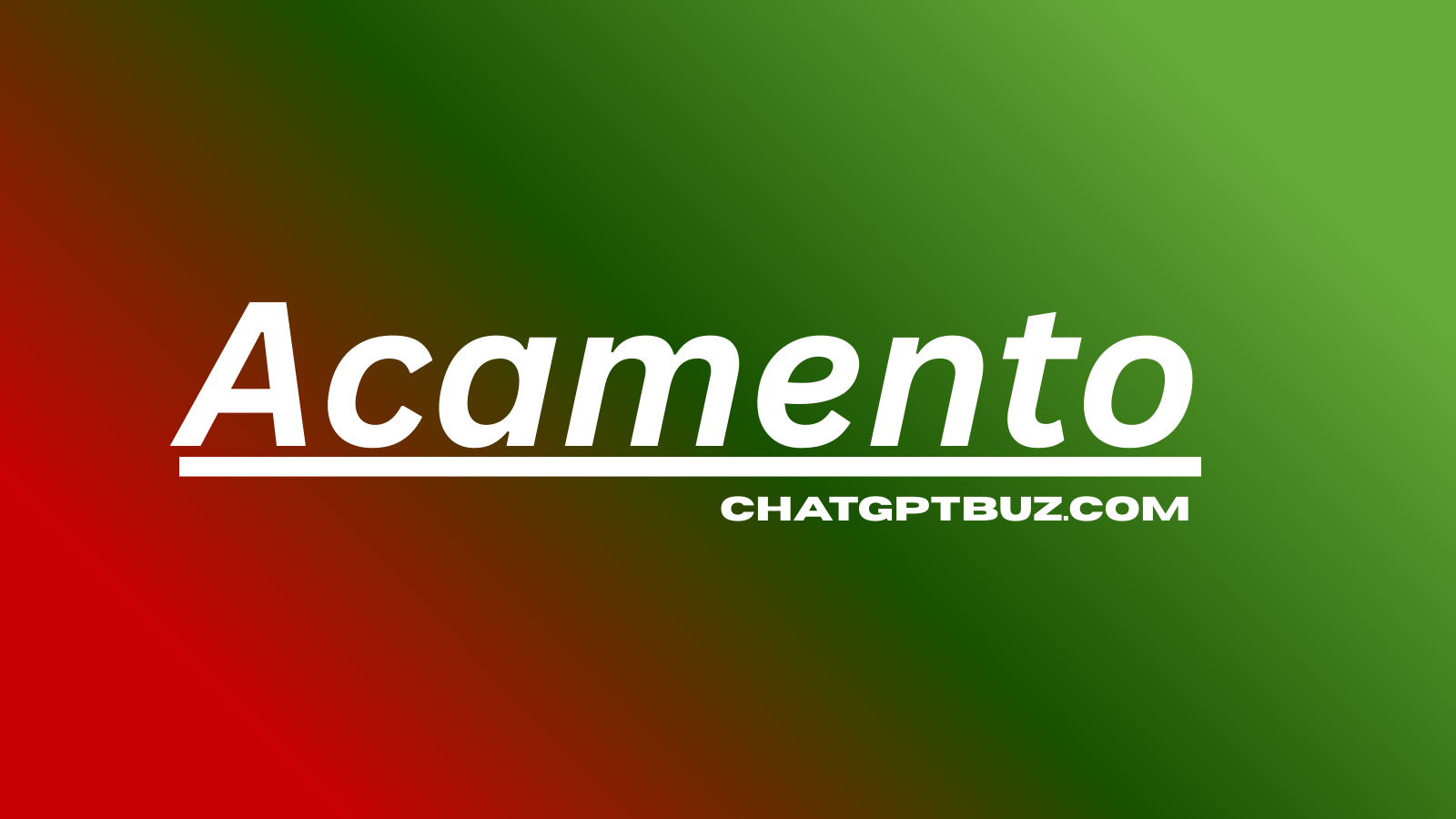Acamento The Future of Streamlined Project Management and Collaboration
In the modern digital economy, teams can no longer afford to lose valuable time to miscommunication, scattered tasks, or complex management systems. Whether in a small startup or a multinational corporation, the demand for streamlined workflows and transparent collaboration has never been higher. Businesses now expect tools that go beyond the basics of task tracking and instead deliver holistic productivity ecosystems.
This is where a new breed of platforms emerges—solutions that unify project management, workflow automation, and team communication under a single umbrella. Among these, one name has quickly caught attention: acamento. Designed with both flexibility and user-friendliness in mind, it provides a central hub where teams can coordinate efforts, monitor progress, and reduce the noise of juggling multiple apps.
This article takes a deep dive into the platform, exploring its features, benefits, limitations, and future roadmap. More importantly, it examines how such a system reshapes the way organizations think about productivity in an increasingly hybrid world.
What is Acamento?
At its core, it is an all-in-one digital workspace that blends project management with collaboration and automation. The goal is to make the complex process of planning, organizing, and executing projects as seamless as possible. Unlike older tools that often focus on one narrow aspect—such as task lists or chat—it integrates multiple layers of productivity.
The name itself comes from a Portuguese root meaning “finishing touch.” This is symbolic of the platform’s mission: to provide that extra layer of polish and completeness to workflows, ensuring projects not only move forward but also reach the finish line with efficiency and clarity.
Where other platforms may overwhelm users with steep learning curves or unnecessary features, this tool emphasizes accessibility. A clean interface, drag-and-drop functionality, and clear visual dashboards allow both beginners and seasoned project managers to adapt quickly.
Core Features
Acamento offers a broad set of features designed to address nearly every stage of project management.
1. Task Management
- Create and assign tasks in seconds.
- Prioritize responsibilities with clear deadlines.
- Switch between list, board, and calendar views for flexibility.
- Gantt-style visualizations for long-term planning.
This flexibility ensures that teams with different working styles—agile developers, marketing teams, or event planners—can customize their view for maximum clarity.
2. Workflow Automation
- Eliminate repetitive tasks such as status updates or email notifications.
- Set up custom triggers for project milestones.
- Automate recurring reports to keep stakeholders in the loop.
Automation reduces the need for micromanagement and frees team leaders to focus on strategy rather than administrative tasks.
3. Collaboration Tools
- Integrated chat for instant communication.
- Real-time co-editing of documents.
- File sharing with version history to avoid confusion.
- Mentions and tagging to bring the right person into conversations quickly.
The combination of communication and file management minimizes the reliance on external apps, reducing what is often referred to as “app fatigue.”
4. Project Tracking and Reporting
- Visual dashboards showing the health of ongoing projects.
- Analytics covering time spent, costs, and resource allocation.
- Exportable reports tailored for executives and stakeholders.
This level of visibility ensures accountability across teams while providing decision-makers with the insights they need to adjust strategies.
5. Cloud-Based Access
- Accessible from desktops, laptops, tablets, and smartphones.
- Automatic synchronization across devices.
- Secure cloud infrastructure for global collaboration.
In an era of remote and hybrid work, this accessibility ensures that team members stay connected, no matter where they are.
How It Improves Productivity
The greatest value lies not just in its features but in the way they address long-standing pain points in project management:
- Clarity: Everyone knows exactly what is expected of them and by when.
- Accountability: With clear ownership of tasks, confusion and duplication are minimized.
- Speed: Automation cuts down on repetitive processes, enabling faster execution.
- Transparency: Stakeholders gain real-time visibility without requiring endless meetings.
By resolving these common bottlenecks, the system reduces stress while boosting efficiency—a critical advantage for modern organizations.
Use Cases
Because of its versatility, Acamento can adapt to different industries and team sizes.
1. Remote Teams
Distributed teams often face challenges with misaligned communication. With shared dashboards, integrated messaging, and cloud-based updates, coordination becomes seamless even across time zones.
2. Marketing Campaigns
Marketing teams can plan editorial calendars, manage design workflows, and schedule campaign launches—all in one place. Automated reminders ensure deadlines are never missed.
3. Software Development
For developers, agile methodology is supported through sprint planning, backlog management, and bug tracking. Visual boards allow teams to monitor progress in real time.
4. Event Planning
From vendor management to scheduling sessions, the platform provides tools for keeping large-scale events organized. Budget tracking features ensure financial resources are monitored closely.
5. Education and Nonprofits
Universities and nonprofits can track research projects, fundraising campaigns, or volunteer efforts, making collaboration easier across diverse groups.
Integration with Other Tools
One of the hallmarks of a successful platform is its ability to work alongside existing systems.
- Slack for team messaging.
- Google Drive and Dropbox for storage.
- Zapier for connecting with hundreds of other apps.
- Calendar integrations for syncing deadlines.
These integrations ensure organizations don’t have to abandon their existing ecosystems but instead enhance them.
User Interface and Experience of Acamento
Ease of use is central to adoption. Acamento features:
- Drag-and-drop task management.
- Color-coded priorities for quick visual scanning.
- Minimal setup time for first projects.
- A balance of simplicity with the depth needed by power users.
For beginners, onboarding is quick, while experienced managers will find advanced reporting and customization tools to meet complex needs.
Security Features
Data protection is non-negotiable. Security measures include:
- End-to-end encryption for sensitive files.
- Two-factor authentication for accounts.
- Role-based permissions for different access levels.
- Compliance with global standards like GDPR.
These measures give peace of mind to businesses handling sensitive client data.
Pricing and Plans
The platform is designed to be scalable, with tiers to match different needs:
- Free Plan – Essential task management features for individuals or small teams.
- Pro Plan – Workflow automation, reporting, and integrations for small to medium businesses.
- Enterprise Plan – Custom solutions, unlimited users, priority support, and advanced security.
Compared to buying multiple separate apps, the pricing is competitive, offering consolidated value.
Customer Support and Resources
Support is a major factor when adopting new software. The platform offers:
- 24/7 live chat and email assistance.
- An extensive knowledge base with tutorials.
- Onboarding support for enterprise clients.
- Community forums for peer-to-peer learning.
This ecosystem ensures teams have the resources they need to make the most of the software.
Advantages
- All-in-one functionality reduces reliance on multiple tools.
- Flexible enough for freelancers, SMEs, and corporations alike.
- Regular feature updates ensure the system evolves with user needs.
- Designed for both office-based and remote environments.
Limitations
No tool is without its drawbacks. Potential challenges include:
- A learning curve for those entirely new to project management systems.
- Advanced integrations are locked behind paid tiers.
- Limited offline access compared to certain competitors.
Acknowledging these limitations ensures realistic expectations for new adopters.
Comparison with Competitors
When placed against other popular tools, unique advantages emerge:
- Trello: While Trello excels at card-based simplicity, Acamento offers more robust automation and reporting.
- Asana: Known for its power, Asana can feel overwhelming for beginners. The discussed system strikes a gentler learning curve.
- Monday.com: Competing closely in terms of customization, but this solution stands out with cleaner usability and competitive pricing.
These differences highlight why many organizations consider adopting it over older, more established options.
Future Developments of Acamento
The roadmap is ambitious, with innovations designed to keep the platform ahead of the curve:
- AI-driven task prioritization to help teams focus on high-impact work.
- Voice-command updates for hands-free project management.
- Predictive analytics that identify risks before they become problems.
- Industry-specific templates tailored for construction, healthcare, and education.
By anticipating future needs, the developers ensure long-term relevance.
The Bigger Picture: Why Tools Like This Matter
In the bigger landscape of digital transformation, tools that centralize project management are more than conveniences—they are strategic necessities. Organizations that fail to streamline workflows risk slower delivery, frustrated employees, and higher turnover.
By enabling clarity, accountability, and transparency, platforms like this drive cultural as well as operational change. They foster environments where teams feel aligned, informed, and empowered.
Conclusion
Project management is no longer just about ticking off tasks—it’s about building ecosystems of productivity that can withstand the complexities of modern business. Platforms like acamento redefine how teams operate by combining simplicity, automation, and security into a unified solution.
Whether for freelancers managing clients, startups racing to scale, or global enterprises coordinating across continents, the platform delivers the finishing touches that turn chaos into clarity. By bridging collaboration and execution, it positions itself not as just another tool, but as a partner in sustainable business growth.
In a world where efficiency is currency, embracing such solutions isn’t just smart—it’s essential for staying competitive.





